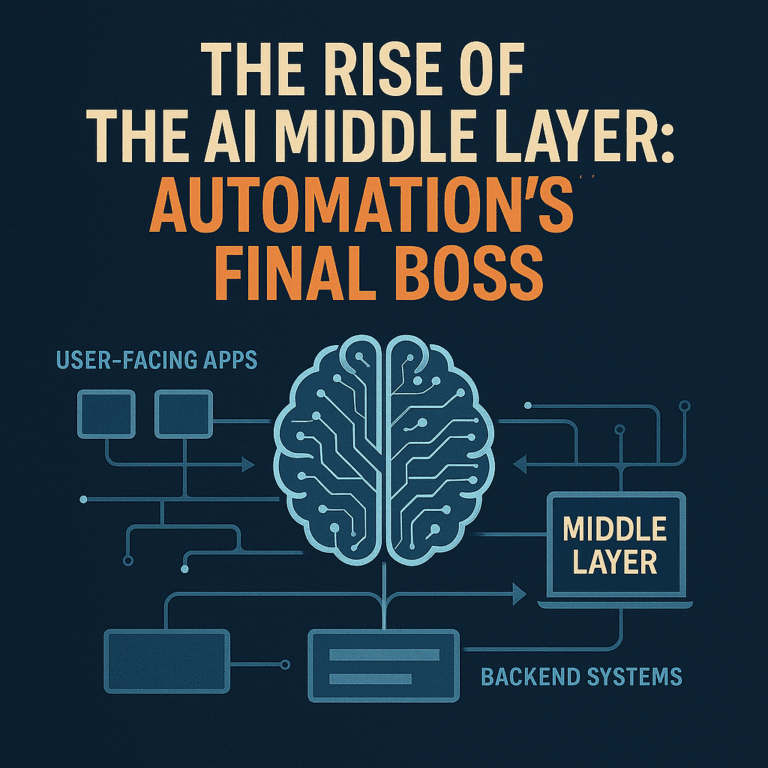AI isn’t about the model anymore. It’s about what you build around it. We’ve moved past the “ask ChatGPT a question” phase. The real leverage now lies in the AI middle layer – that connective tissue of scripts, APIs, prompt chains, queues, validators, agents, and glue code that turns language models into real workflows.
This middle layer is where automation goes from gimmick to infrastructure. It’s where prompt injection meets business logic. It’s where you stop building flashy toys and start building systems that scale.
Think of it like this: GPT-4 is the engine. But without a chassis, transmission, steering, and brakes, it’s just noise. The AI middle layer is what turns a raw model into something that can actually operate inside a business without falling apart.
Right now, a lot of people are still stuck at the frontend. Plugging a question into ChatGPT, copying the response, and calling that “AI integration.” Cute. Meanwhile, the people building middle layers are chaining prompts, routing decisions through agents, caching embeddings, managing context windows, and deciding when to even use the model in the first place.
They’re not building “AI tools.” They’re building AI workflows – modular, scalable, and increasingly invisible.
Here’s what the AI middle layer usually includes:
- Prompt templates – not just hardcoded, but dynamic and context-aware
- Data pipelines – pulling in external data, cleaning it, and feeding it in as context
- Function calling / tool use – LLMs triggering other services or code based on output
- Validation layers – checking for hallucinations, fallback handling, safety triggers
- Scheduling & event hooks – so AI doesn’t just react, it acts on a timeline
- Orchestration frameworks – n8n, LangGraph, custom codebases to manage flow
This is the difference between asking GPT to write an email, and having a system that automatically drafts, validates, categorizes, and schedules client outreach based on CRM activity. One is a magic trick. The other is leverage.
Most of the current “AI products” are just wrappers around this layer – polished UIs that hide the complexity. That’s fine. But the people who own the middle layer? They’re the ones in control. They can swap models, rewire workflows, add redundancy, scale horizontally, optimize tokens, insert logic and decision points. That’s real engineering, not prompt jockeying.
And that’s what makes the middle layer the final boss of automation. It’s where code meets context. Where you stop thinking like a user and start thinking like an architect. If you’re only working on the surface layer, you’re always at the mercy of someone else’s API limit, pricing change, or UI redesign. But if you own the orchestration, you’re untouchable.
Here’s the kicker: the middle layer is usually invisible to the client. They just see results. They assume your AI product is smart, not because of the model, but because of how you’ve structured everything around it. The logic, the timing, the fail-safes. That’s the magic trick. The model isn’t smart. You are.
So if you’re building for longevity in AI, forget the frontend flash. Build the middle layer. That’s where the real power is. That’s where automation stops being impressive and starts being unfair.

